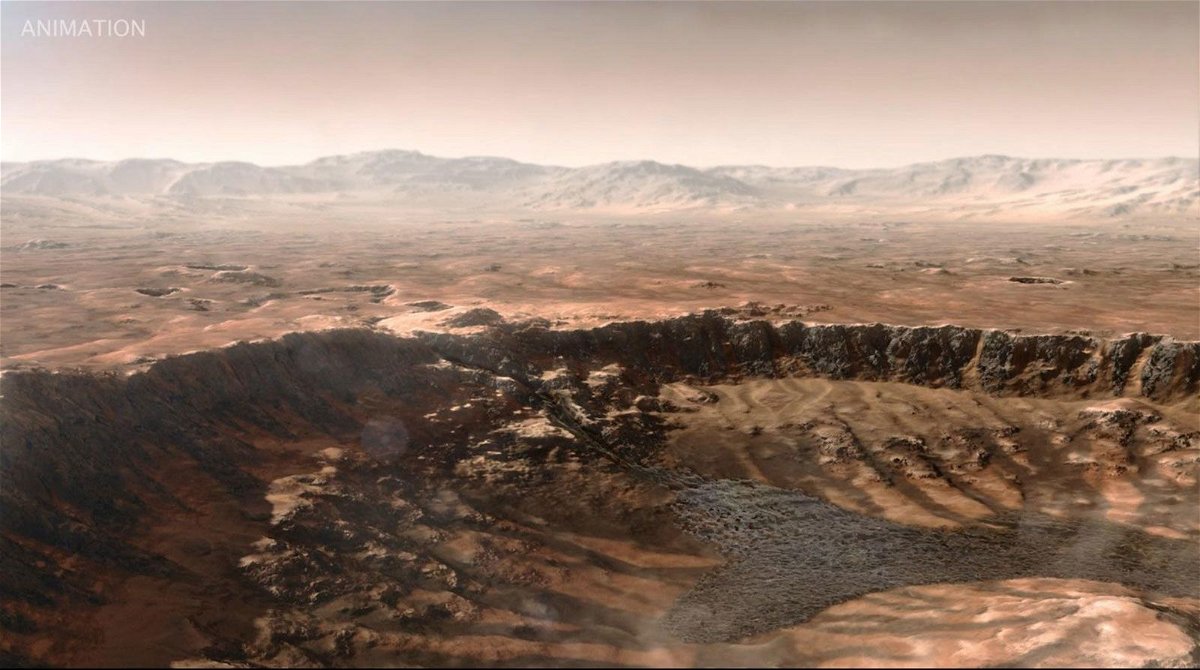Perseverance rover uncovers intriguing new clues about water on Mars

By Ashley Strickland, CNN
(CNN) — After spending 1,000 days on the Martian surface, NASA’s Perseverance rover has uncovered new details about the history of an ancient lake and river delta on the red planet.
The new insights, detectable thanks to the rover’s detailed on-the-ground sleuthing, are helping scientists piece together the puzzle of Mars’ mysterious past, and they ultimately could determine whether life ever existed there.
Perseverance and its helicopter companion, Ingenuity, landed in Jezero Crater on February 18, 2021, to search for signs of ancient microbial life.
As part of the search, the robotic explorer just completed its investigation of a river delta that once fed into a lake that filled Jezero Crater billions of years ago. Along the way, Perseverance has also collected 23 rock samples from different locations throughout the crater and delta.
Each sample, about the size of classroom chalk and encased in metal tubes, may be returned to Earth in the future by NASA and the European Space Agency’s joint Mars Sample Return campaign. Studying the samples on Earth would allow for a more detailed analysis using lab equipment too unwieldy to send to Mars aboard the rover.
Scientists shared some of the insights they have gleaned from Perseverance’s trek across Mars on Tuesday at the American Geophysical Union fall meeting in San Francisco.
Following the water on Mars
The rover collects samples by using an abrasion tool on its arm to scrape away at Martian rock surfaces and then analyzes the rock’s composition using its Planetary Instrument for X-ray Lithochemistry, known as PIXL.
Some of Perseverance’s recent rock samples include silica, a fine-grained mineral that aids in the preservation of ancient fossils and organic molecules on Earth. Organic molecules can form during geological and biological processes.
“On Earth, this fine-grained silica is what you often find in a location that was once sandy,” said Morgan Cable, deputy principal investigator of PIXL at NASA’s Jet Propulsion Laboratory in Pasadena, California, in a statement. “It’s the kind of environment where, on Earth, the remains of ancient life could be preserved and found later.”
Some of the rocks also included iron associated with phosphate, a natural source of the element phosphorus that acts as a component of DNA and cell membranes.
Carbonate was also detected in the samples. These minerals indicate past water-rich environments, acting like time capsules for the environmental conditions on Mars from when the rocks initially formed.
“We picked Jezero Crater as a landing site because orbital imagery showed a delta — clear evidence that a large lake once filled the crater. A lake is a potentially habitable environment, and delta rocks are a great environment for entombing signs of ancient life as fossils in the geologic record,” said Ken Farley, Perseverance project scientist and professor of geochemistry at the California Institute of Technology, in a statement. “After thorough exploration, we’ve pieced together the crater’s geologic history, charting its lake and river phase from beginning to end.”
Martian rocks tell a story
Scientists believe that Jezero Crater formed when an asteroid slammed into Mars 4 billion years ago.
Perseverance began its mission by studying and sampling the crater floor soon after landing. The rover’s detective work helped scientists determine that the crater floor is made of volcanic rock that formed either due to magma that bubbled up to the surface or volcanic activity on the Martian surface.
As Perseverance rolled along, the rover came across examples of sandstone and mudstone, suggesting that a river flowed into the crater millions of years after it formed. A top layer of mudstones rich with salt is all that remains to signify that a shallow lake filled the crater, reaching 22 miles (35 kilometers) wide and 100 feet (30 meters) deep, before some climatic shift caused the lake to evaporate.
Perseverance also found evidence of boulders that originated from elsewhere on Mars and were deposited within the river delta and in the crater by fast-flowing rivers.
“We were able to see a broad outline of these chapters in Jezero’s history in orbital images, but it required getting up close with Perseverance to really understand the timeline in detail,” said Libby Ives, a postdoctoral fellow at NASA’s Jet Propulsion Laboratory, in a statement.
Perseverance’s suite of instruments has the ability to detect microscopic fossil structures and the chemical traces left behind by microbial life, but the rover hasn’t detected either one. However, the geological evidence that the rover has collected so far paints an enticing picture.
“We have ideal conditions for finding signs of ancient life where we find carbonates and phosphates, which point to a watery, habitable environment, as well as silica, which is great at preservation,” Cable said.
And the mission isn’t over yet. Next, the rover will study an area near the crater’s entrance where a river flooded across the crater floor, leaving behind deposits of carbonate that resemble a bathtub ring.
The-CNN-Wire
™ & © 2023 Cable News Network, Inc., a Warner Bros. Discovery Company. All rights reserved.
